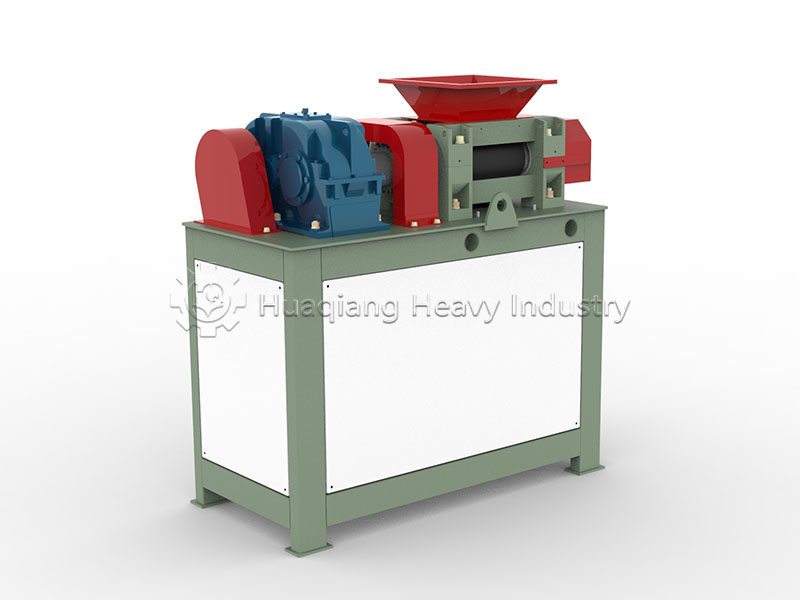

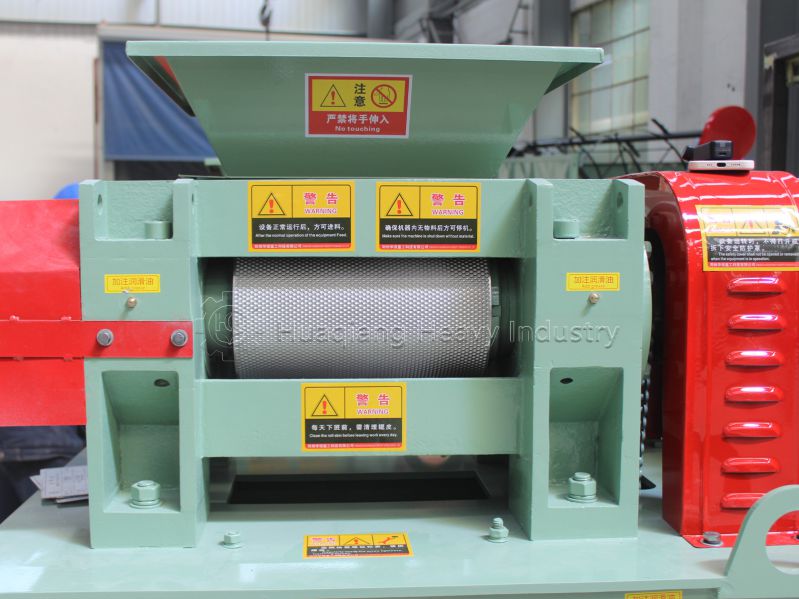
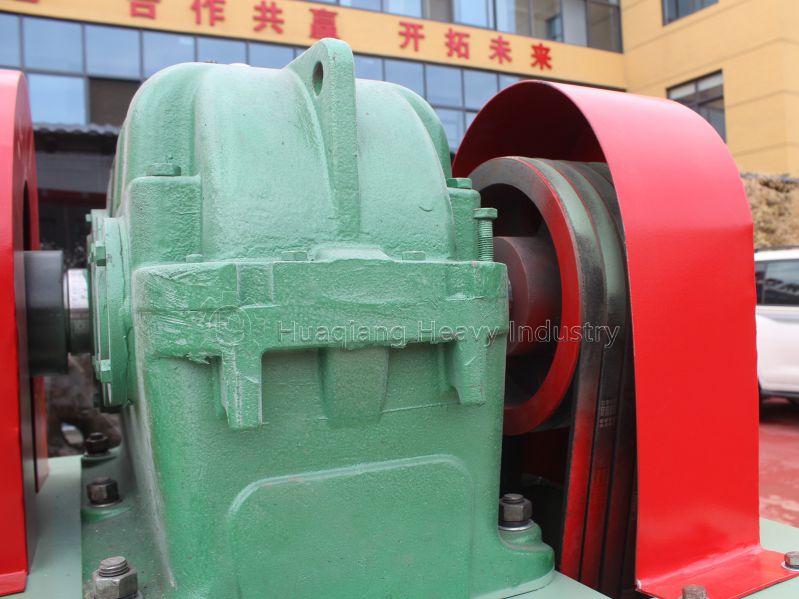

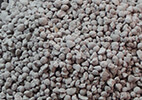
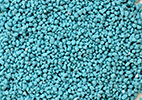
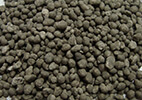
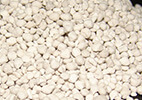
As an important granulation equipment, the double roller granulator utilizes a non-drying, room-temperature process, which offers significant advantages in energy conservation and improved production efficiency. Its core operating principle is to force a properly proportioned mixture through a feed mechanism into the gap between a pair of equal-sized, rotating extrusion rollers.
Under the powerful extrusion pressure, air inside the material is expelled, the distance between particles is reduced, and the intermolecular forces are strengthened, resulting in the material being squeezed into dense sheets or strips. As the rollers continue to rotate, the pressure on the material exhibits a specific pattern: reaching its maximum value when the line connecting the two roller radii is horizontal, typically reaching several MPa or even higher, and then rapidly decreasing. At this point, the formed material recovers due to its own elasticity, breaking free from the contact with the roller surface under the action of the rebound force, and smoothly falls to the next process.
This granulation method fundamentally avoids the energy-intensive drying process required in traditional wet granulation. Calculated energy consumption is only 30%-50% of that of traditional wet granulation, significantly reducing energy consumption and production costs. Furthermore, the entire production process produces no wastewater, exhaust gas, or waste residue, fully complying with national environmental protection standards. This is a truly energy-saving and environmentally friendly granulation process.
Where are double roller granulators commonly used?
The double roller granulator has a unique working principle and structural design, and its adaptability to raw materials is extremely wide. It has outstanding performance in many fields. The specific application scenarios are as follows:
Fertilizer field
It is capable of producing various types of compound fertilizers with various concentrations (from low concentration of 20% to high concentration of more than 60%), such as the granulation of single fertilizers such as ammonium chloride and ammonium sulfate, as well as the production of compound fertilizers such as organic fertilizers, inorganic fertilizers, biological fertilizers, and magnetic fertilizers.
The technology has significant advantages in granulating rare earth, potash, and ammonium bicarbonate compound fertilizers. For example, it effectively addresses the moisture absorption and caking issues associated with traditional potash granulation methods, resulting in granular potash fertilizers with excellent fluidity and low hygroscopicity. This technology fills a gap in related fields in China and is at the forefront domestically.
It can also use ammonium carbon, urea, ammonium chloride, ammonium phosphate, potassium chloride, etc. as base materials to produce multi-element fertilizers with different proportions of nitrogen, phosphorus and potassium according to different soil fertility and crop needs, to meet the diverse nutrient needs of different crops such as rice, wheat, corn, vegetables and fruits.
Other industrial fields
Pharmaceutical industry: Suitable for granulation of various medicinal granules, such as Chinese medicine granules, raw material granules of Western medicine tablets, etc. The granulation process can effectively ensure the stability and uniformity of drug ingredients.
Chemical industry: It can be used for granulation of capsule filling particles, pigments (such as titanium dioxide particles), detergents (such as washing powder particles), catalysts (such as automobile exhaust catalyst particles), strontium carbonate, inorganic salts (such as sodium chloride particles), chloroisocyanuric acid, bleaching powder, pesticides (such as insecticide particles), oxides and other materials.
Feed industry: It can mix various feed raw materials, such as corn, soybean meal, fish meal, etc., and then extrude and granulate them to produce nutritionally balanced pellet feed that is easy to store and transport, reducing feed waste during transportation and feeding.
Industrial dust recovery: It also plays an important role in industrial dust recovery. For example, the dust from iron foundries contains a large amount of iron. These dust materials can be compressed and formed by mechanical pressure through the roller extrusion granulator without adding any wetting agent, thus ensuring the purity of the product. The formed particles can be reused in ironmaking production. Lead, zinc, aluminum dust, converter dust, filter dust, grinding dust and other dust can also be effectively recycled, which not only reduces environmental pollution but also improves resource utilization.
As the core component of the equipment, the extrusion roller is usually made of high-strength alloy steel, such as 45 steel, chrome-molybdenum steel, etc. After tempering, quenching and other heat treatment processes, the surface hardness can reach HRC50-60, and it has good wear resistance and pressure resistance.
The surface is typically designed with regularly arranged grooves, holes, or protrusions of uniform shape and size. The grooves can be circular, square, or diamond-shaped, with a depth of 2-10 mm and a spacing of 5-20 mm. These special designs optimize the extrusion of the material, allowing it to be better shaped during the extrusion process, producing pellets that meet specific shapes and specifications.
Discharging device
It is generally composed of an inclined chute and a conveyor belt. The chute is usually made of stainless steel to prevent material adhesion and corrosion.
It is used to receive the formed materials falling from the extrusion rollers and convey them to subsequent processes such as crushing and screening. The design of the discharge device must ensure smooth material transportation. The inclination angle of the chute is usually 30°-45° to avoid material blockage or accumulation.
Transmission and control systems
The transmission system is driven by an electric motor (usually a three-phase asynchronous motor, with a power ranging from 5.5kW to 55kW depending on the equipment model) to drive the belt and pulley, which is transmitted to the driving shaft through a reducer (commonly used gear reducers, cycloid pinwheel reducers, etc.), and synchronized with the driven shaft through split gears, so that the two extrusion rollers work in opposite directions. The speed can generally be adjusted within the range of 10-50 rpm.
The control system, comprised of a PLC control cabinet, touch screen, and sensors, precisely regulates equipment operating parameters such as speed, extrusion pressure, and material flow. Operators set these parameters via the touch screen, and the system automatically adjusts based on sensor feedback to meet the needs of different materials and production processes, ensuring stable and efficient operation.
Features of fertilizer granules compaction machine:
Compared with other granulation equipment, the double roller granulator has the following advantages:
Energy saving and consumption reduction
As mentioned above, the high energy consumption of the drying process in wet granulation is avoided, which greatly reduces energy consumption. Taking a compound fertilizer production line with an annual output of 10,000 tons as an example, the use of a double roller granulator can save 100-200 tons of standard coal per year.
At the same time, the power consumption of the equipment during the entire production process is relatively low. Compared with other granulation methods, it can save the company a lot of energy costs in the long run.
Environmental advantages
The absence of a drying process also avoids pollution problems such as waste gas emissions caused by drying, and there is no need to equip complex waste gas treatment equipment.
During the production process, the friction coefficient between the material and the roller is small, usually between 0.1-0.3, and the temperature rise is low, generally not exceeding 50°C. It will not cause thermal decomposition or deterioration of the material, and there is no pollution such as dust flying, which is in line with the current green and environmentally friendly industrial production concept.
Simple process
The process is short and simple, and only a few main steps are required from raw material mixing to the production of finished particles, without the need for complex intermediate steps such as drying and cooling.
The equipment has a compact and scientific layout, and occupies only 50%-70% of the floor space of traditional wet granulation equipment. It is easy to operate and maintain, and can effectively reduce the equipment footprint and the company's production and management costs.
High product quality
The produced particles have high strength, generally reaching 20-50N, and the bulk density is significantly improved, usually 50%-100% higher than the raw materials. They can better meet the requirements of the product during storage, transportation and use, and reduce particle breakage and agglomeration.
And through precise control of equipment parameters and processes, high-quality particle products with uniform particle size and regular shape can be produced, and the uniformity of the particles can reach more than 90%.
Great operational flexibility
The size of the extrusion force can be flexibly adjusted by hydraulic pressure, with a wide adjustment range, which can adapt to different material properties (such as material hardness, humidity, viscosity, etc.) and production process requirements.
Whether it is a material with high hardness (such as phosphate rock powder) or a relatively soft material (such as organic fertilizer raw materials), good granulation effect can be achieved by adjusting the parameters, and the particle size of the product can be adjusted by replacing extrusion rollers of different specifications to meet the needs of different users.
| Model | DZJ-I 1.0 | DZJ-I 2.0 | DZJ-I 3.0 | DZJ-I 4.0 |
| Capacity (t/h) | 1~1.5 | 1.5~2.5 | 2~3 | 3~4 |
| Power (Kw) | 11K | 18.5KW | 22KW | 45KW |
| Roller Dimension(mm) | Φ150×220 | Φ150×300 | Φ186×300 | Φ300×300 |
| Feed Material Size(mm) | ≦0.5mm | ≦0.5mm | ≦0.5mm | ≦0.5mm |
| Output Granules Size(mm) | Φ2.5~Φ10 | Φ2.5~Φ10 | ø2.5-ø10 | ø2.5-ø10 |
| Gearbox Model | ZLY160 | ZLY160 | ZLY180 | ZLY224 |
| Rotation Speed (r/min) | 60 | 60 | 60 | 60 |